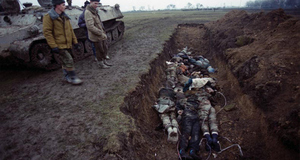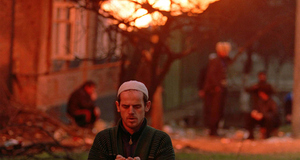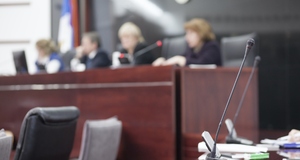Featured Article:Disappearance and Death: The Fate of Chechen Human Rights Activists
By
2011, Vol. 3 No. 02 | pg. 1/2 | »
KEYWORDS:
The Republic of Chechnya in Russia’s North Caucasus region has drawn significant attention for being host to remarkable instability, thriving terrorism, and a staggering display of human rights violations over the past two decades, including torture, illegal imprisonment, and extrajudicial execution. Perhaps even more disturbing is the continued violence against human rights activists in Chechnya – a deeper problem woven into the Chechen human rights struggle itself. While Russia has been pressured by other states and international organizations alike to protect against the near-inevitable murdering of Chechen human rights advocates, it has failed to actively do so. The question this paper poses is thus: what provisions does Russia’s legal framework lack that creates an environment conducive to such gross human rights violations against rights advocates themselves? In fact, both the Chechen and Russian constitutions provide extensive coverage of human rights to people in Chechnya. It is, rather, the unchecked brutality of the Chechen elite, a lack of attention and action from Moscow, and a lack of international influence in the enforcement of human rights standards and rulings that have fostered the harrowing environment in Chechnya.Following the collapse of the Soviet Union in 1991, a wave of separatism rose through Chechnya as it distanced itself from the Russian Federation, and created vast instability that has remained prevalent to the present day. Chechen efforts to secede were eventually met with the occupation of Russian forces and the beginning of war in 1994 (First Chechnya War). After the close of the first war in 1996, Russian-Chechen tensions remained somewhat controlled, although still hostile, for three years. In 1999, however, a series of bombings across Russia occurred and were believed by authorities to be orchestrated by Chechen terrorists. The bombings, in addition to boundary violations of Chechen militants with the neighboring region Dagestan, provoked Russian authorities to once again become militarily involved in Chechnya (Chechen Conflict). Counterterrorism operations on the part of the Russian forces were met with a great swell of insurgency among Chechen rebels. Nonetheless, Russia maintained strength in the region throughout both conflicts and at one point transferred its power of presence to a pro-Kremlin Chechen leader named Akhmat Kadyrov, elected by the Chechen people in 1997. Kadyrov’s reign as leader of Chechnya quickly became characterized by brutal counterinsurgency methods within the law enforcement and security institutions of the Republic. Victimization under Akhmat Kadyrov’s government was warranted on a series of bases: critique of Kadyrov’s authoritarian leadership, vocalization of corruption within the government, drawing attention to human rights abuses of law enforcement authorities, and critique of general government policy brought devastating consequences to the Chechen people (Lokshina). When power was transferred to Akhmat’s son, Ramzen Kadyrov, in 2007 at the hand of Russian President Vladimir Putin, very little changed. The most common action taken against those who commit any of the aforementioned actions involves methods of unofficial persecution such as house burnings, sudden abduction and/or disappearances, detainment in illegal prisons, torture, and, almost inevitably, death (Flames and Fear in Chechnya). The counterinsurgency actions taken on the part of Kadyrov’s government were, and continue to be, evident violations of human rights as outlined in the United Nations’ Universal Declaration of Human Rights (UNDHR). Article 3 of the Universal Declaration states, “everyone has the right to life, liberty and security of person.” This right is constantly violated by those who end up dead as a result of speaking out against a corrupt and violent government. Article 5 guarantees that each person shall not “be subjected to torture or to cruel, inhuman or degrading treatment or punishment.” Article 9 provides for those illegally detained, stating, “no one shall be subjected to arbitrary arrest, detention or exile” (United Nations). Nonetheless, human rights violations and murdering of human rights activists continue to occur repeatedly with impunity in Chechnya. In the year 2009 alone, there have been four total murders of human rights activists in Chechnya, as well as instances of threats made to several workers who still remain alive. The first death came in January with the shooting of human rights lawyer Stanislav Markelov in Moscow, targeted “because he represented victims of national violence in court” (Barry). It is still unclear as to the identity of the particular killer, but the implicit accusation of the state’s role in the victimization of Markelov’s clients was enough to see Markelov turn into a victim himself. The second, and perhaps most publicized death of an activist in Chechnya was that of Natalya Estemirova in July 2009. Ms. Estemirova worked at the Memorial Human Rights Center in Grozny, Chechnya’s capital city, in addition to working closely with Human Rights Watch. At the time of her death, Estemirova was addressing “several cases of human rights abuses, including extrajudicial executions, punitive house burnings, abductions and arbitrary detentions” (Leading Chechnya Rights Activist Murdered). Drawing attention to the realities of Chechen human rights violations undeniably caused Estemirova’s tragic death. In perhaps the most explicit statement from the Kremlin on disappearing Chechen human rights activists, Russian President Dmitri Medvedev acknowledged the reality of the situation: “She was doing a very useful job. She spoke the truth” (Bohlen). The murder of Natalya Estemirova was followed by two more killings in August. Zerma Sadulayeva and Alik Dzhabrailov were both activists for the Save the Generation humanitarian charity. Their work involved providing psychological and physical rehab to disabled children, orphans and victims of Chechen landmines, scattered across the country as a result of wartime fighting. Sadulayeva and Dzhabrailov were abducted from their office on August 10th by several armed, unidentified men; their lives came to a sudden and devastating end early the next morning, when the two were found dead in the trunk of Dzhabrailov’s car near Grozny (Lokshina). As illustrated by Human Rights Watch director Kenneth Roth, “it seems to be open season on anyone trying to highlight the appalling human rights abuses in Chechnya. It’s high time the Russian government acted to stop these killings and prosecute those responsible” (Leading Chechnya Rights Activist Murdered). It is evident that the brutal and arbitrary murders of the aforementioned human rights activists violate the previously referred to right to life provided by the UN Universal Declaration of Human Rights, as well as the right from torture and cruel, inhuman or degrading treatment. Violence based upon the nature of that activists’ work further violates guarantees provided by the UNDHR. Article 19 grants the freedom of opinion and expression to every person, a right greatly suppressed under the Chechen government. Bringing to light human rights abuses and expressing disapproval and concern for the authorities’ role in such action results in persecution as opposed to protection. Article 23 grants the right to work and to free choice of employment; clearly victimization was based upon the nature of the activists’ work, despite their guarantee to exercise that right freely. Article 28 applies to Chechnya at large, with the “entitlement to a social and international order in which the rights and freedoms… in this declaration can be fully realized” (United Nations). The Chechen Republic has greatly failed to create and sustain an environment in which its citizens can exercise their full set of rights as provided for by the United Nations. To address skepticism at the international applicability and enforcement of the UNDHR, I will now turn to the Chechen constitution itself, which, perhaps surprisingly, explicitly provides for the same rights as the UNDHR. The first Chechen constitution was adopted in 1992, and has since been revised through a 2003 referendum contingent on Kremlin approval. Article 3 of the Chechen constitution, titled ‘Protection of Human Rights’ designates rights and liberties of Chechens as supreme values, around which the conditions of society are constructed to ensure accommodation. Article 17, like article 3 of the UNDHR, accounts for the basic right to life and freedom from the arbitrary taking of life. Article 18, addressing human dignity, protects against subjection to torture, violence and cruelties against human dignity. In addition, providing additional measures to human rights activists in particular, article 26 provides the right to freedom of thought and speech, while article 34 presents the freedom of labor, granting individuals the right to freely choose the nature of their activity and profession (The Republic of Chechnya). When regarded in comparison, the Chechen constitution and the UNDHR account for the same individual rights. In a larger sense, Russia also plays a role in its overseeing of the Chechen constitution and its alignment with the constitution of the Russian Federation. A consideration of legal provisions guaranteed to protect people, who happen to be human rights activists in this particular case, thus begs the question of the unaddressed causes of continued violence against human rights workers in Chechnya. To begin on the most local, immediately influential level, one can first look to the Chechen authorities as perpetrators of violence against Chechen human rights workers. Ramzen Kadyrov’s presidency, like that of his father, is characterized by a great intolerance of challenge to authority. Despite the right to freedom of thought and speech provided in the Chechen constitution, and referred to above, there is very little, if any, opportunity to voice criticism of the government or its elite group of actors. As a measure of self-protection, Kadyrov has hired counterinsurgents to fill many of the top government ranks, which also essentially acts to further diminish the likelihood of anti-government sentiment. Any such opinion shrouded in perceived rebellion provokes the threat of swift and effective action from Kadyrov’s counterinsurgent authorities. Human rights activists are viewed as doing just that. By drawing light to human rights abuses and their implicit origins in a corrupt and intolerant government, activists are quickly silenced by the government itself with no consequence to the killers. Despite the legal system’s failure to undertake any action in persecuting the killers themselves of the victimized human rights workers, there remains a high level of confidence on the part of observers within Russia, and the larger international community, in the role of both official and unofficial Kadyrov aides in the aforementioned murders. When asked directly about his responsibility in the murder of Natalya Estemirova, Kadyrov responded “Why should [I] kill a woman who was useful to no one? She was devoid of honor, merit and conscience” (Bohlen). This clear lack of respect for Estemirova’s life and her passionately altruistic work reigns supreme over the authorities under Kadyrov’s control. The elite operate under such a mindset, committing crimes while unable to be challenged or influenced by other participants in the system – in effect, the Chechen population. For the murdering of human rights activists, “most human rights observers lay the blame … on Mr. Kadyrov, whose control over the Chechen republic and its wealth are unchallenged… the fact is that criminals, including those in uniform, act with impunity” (Bohlen).Continued on Next Page » Suggested Reading from Inquiries Journal
Inquiries Journal provides undergraduate and graduate students around the world a platform for the wide dissemination of academic work over a range of core disciplines. Representing the work of students from hundreds of institutions around the globe, Inquiries Journal's large database of academic articles is completely free. Learn more | Blog | Submit Latest in Political Science |
















